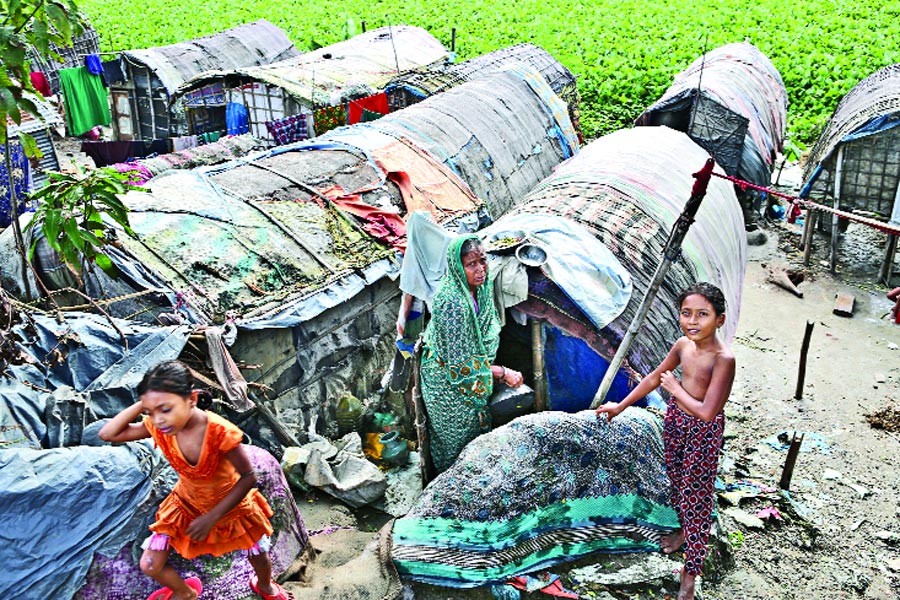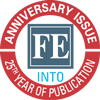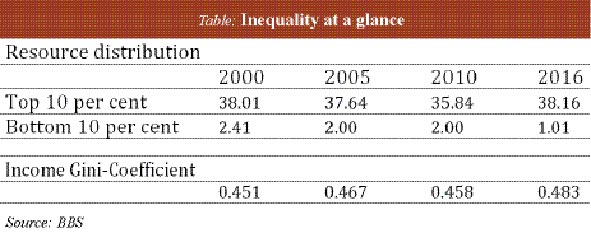
 Bangladesh economy is growing rather persistently. Annual average growth rate of the Gross Domestic Product (GDP) climbs close to 7 per cent. The country has already stepped into the Lower Middle-Income Country (LMIC) category and aspires to graduate from the status of Least Developed County (LDC) by 2024.
Bangladesh economy is growing rather persistently. Annual average growth rate of the Gross Domestic Product (GDP) climbs close to 7 per cent. The country has already stepped into the Lower Middle-Income Country (LMIC) category and aspires to graduate from the status of Least Developed County (LDC) by 2024.
The robustness of the economy is reflected in many macro indicators. For instance, annual consumption has been increasing by around 10 per cent. Total consumption in the past fiscal year (FY17) grew to Tk 14.46 trillion from Tk 13.00 trillion in FY16. Consumption growth means people are spending more. The higher spending spree is also visible in several indicators like purchasing new cars and apartments. On average, at least 67 new cars are pressing in service daily in Bangladesh. In 2016, some 20,304 new cars were registered with the Bangladesh Road Transport Authority in the whole of Bangladesh, 18,010 of them in Dhaka alone.
RESOURCE CONCENTRATION: But, consumption is not even at all thanks to huge resource accumulation by smaller section of people in the country. Credit Suisse Global Wealth Databook 2016, released November last, showed that wealth per adult in the country was $1,069 in 2000 which surged to $2,347 in 2016. But, distribution of wealth is too disparate. Around 96.7 per cent of the total adult population possessed wealth below $10,000 while 3.2 per cent bagged wealth worth between $10,000 and $100,000 ($0.10 million). Only 0.2 per cent of the country's adult population owned wealth worth between $0.10 million and $1.0 million. By this estimate, Gini index of Bangladesh stood at 0.786 in 2016.
The latest Household Income and Expenditure Survey (HIES-2016), released in October this year, validates the resource concentration and depicts worrisome trend in socioeconomic disparity in Bangladesh.
The degree of income inequality, as measured by the Gini coefficient, has increased from an average of 0.38 in the 1980s to 0.44 in the 1990s and further to 0.46 in the 2000s. Thus, while the average living standard is rising faster than ever, so is the gap between the rich and the poor.
HIES-2016 showed that income inequality increased over the years to 2016 when economic growth continued to move upward and the growth rate broke the '6 per cent trap.' Income Gini Co-efficient increased to 0.483 in 2016 from 0.458 in 2010.
Again, top 10 per cent of the households in the country are now enjoying around 38.16 per cent of the total national resources which was 35.84 per cent six years back. At the same time, the bottom 10 per cent of the household lost almost half of their entitlement on national resources. It came down to only 1.01 per cent in 2016 from 2.00 per cent in 2010.
Even a decade ago the situation was somewhat better. The top 10 per cent of the population owned around 37.64 per cent of the national resources in 2005 while bottom 10 per cent owned 2.00 per cent. Thus, situation of resource concentration slightly improved during that period (2005-2010) which later started to move to the opposite direction.
 The inequality situation in the country after 2010 is also captured in various international studies like Credit Suisse Global Wealth Databook. Moreover, series of proxy indicators, along with anecdotes, are there to expose the growing socioeconomic disparity in Bangladesh.
The inequality situation in the country after 2010 is also captured in various international studies like Credit Suisse Global Wealth Databook. Moreover, series of proxy indicators, along with anecdotes, are there to expose the growing socioeconomic disparity in Bangladesh.
Take the case of public transport in the country. It is a total mess. Hundreds of thousands of commuters in the capital city and many other parts of the country have been suffering for want of smooth public transport. They have to depend on ramshackle buses and minibuses for regular travel; they have to waste their valuable times getting caught in traffic congestions. Those who can afford private cars or dedicated office transports have some comfort on journey. Waste of time and energy is the cost paid by most of the people while commuting.
Development Finance International and Oxfam unveiled Commitment to Reducing Inequality (CRI) Index 2016 this year. It gauged the government efforts in three policy areas: social spending, progressive taxation and higher wage and stronger labour rights.
According to the index, Bangladesh ranked 141 among 152 countries of the world. It means, Bangladesh is doing quite badly on addressing the inequality. Among the South Asian countries, only Bhutan and Afghanistan stood below Bangladesh in the ranking.
A CASE of RMG INDUSTRY: A critical area of the index is wage and labour rights. The predicament of the workers in the Ready-Made Garment (RMG) industry is clearly reflected in the index. Oxfam report categorically mentions that in Bangladesh, garment workers are entitled to Tk 5,300 ($68) a month, the lowest minimum wage of all garment workers globally and well below the international poverty line. Worse yet, workers in other sectors are entitled to only Tk 1,500 ($19) a month. "The minimum wage is revised only every five years, although in 2013 international pressure following the collapse of the Rana Plaza factory led to a further increase after just three years," it adds.
In fact, RMG industry is the largest beneficiaries of the government policies and fiscal supports over the decades. But, it is mostly the owners who are enjoying the creams while labourers continue to suffer from low pay and lower standard of living and working. The costs of environmental damage done by the industrial units are also huge. A deplorable discrimination is visible in RMG industry, where ill-paid workers stitch world-class wear for high-society people.
In the national budget for FY18, the government also provides biased incentives to the RMG. The corporate tax rate for the sector drastically declined to 12 per cent from 20 per cent. The rate was 35 per cent two years ago which was reduced to 20 per cent in FY17. At that time, the finance minister had proposed to increase the source tax to 1.50 per cent from 0.60 per cent. But due to stiff resistance from the apparel lobby, the minister finally set it at 0.70 per cent.
It should be noted that the country has to forgo a good amount of revenue due to such relaxation of tax rates. Unfortunately, tax authority is not making the forgone amount of revenue public. It was only in 2014 when the National Board of Revenue (NBR) announced reduction in the source tax on readymade garment (RMG) industry to 0.30 per cent from 0.80 per cent for 15 months. The cut was to compensate damages faced by the industry during the political turmoil in the second half of 2013. A calculation of related revenue foregone at the time showed that reduction in tax at source on export of apparel items would cost at least Tk 20 billion in revenue in 15 months.
Thus revenue forgone at the expense of people's hard-earned money to cater an industry which has been enjoying series of benefits is a big discrimination to other sectors. Moreover, the policymakers' generosity to the clothing-industry owners and their indifferent attitude towards the plight of the labourers and their rational demand for minimum wage hike is clearly very discriminatory. After last year's Savar unrest, which was dealt with brutally to give the garment owner an upper hand, the legitimate demands of the workers are sidelined.
HUMAN DEVELOPMENT ASPECTS: Though Bangladesh has been gradually improving on different indicators of human development, entrenched inequality is also there. The latest Human Development Report of the United Nations Development Programme (UNDP), released March this year, categorically mentioned this.
According to the report, growing inequality in income as well as education cast shadow on human-development efforts of the country.
"The 'loss' in human development due to inequality is given by the difference between the HDI and inequality-adjusted HDI, or IHDI," said the report. "As the inequality in a country increases, the loss in human development also increases," it explained.
Bangladesh's HDI for 2015 was 0.579. The closer the country's HDI value is to 1, the better its human development index. But, when the value is discounted for inequality, the HDI falls to 0.412 which means "a loss of 28.9 per cent due to inequality in the distribution of the HDI dimension indices." Sri Lanka, India and Nepal experienced lesser loss in human development than Bangladesh on account of inequality.
If we translate the UNDP assessment of human-development inequality, it shows that people in Bangladesh are facing a lot of discrimination to avail health and education. For instance, South Asia has the lowest public expenditure on health as a percentage of GDP, at 1.6 per cent. Bangladesh's expenditure is even much lower, at 0.8 per cent of GDP. Lower public expenditure makes it difficult for the poor and low-income people to get even basic quality health care in many cases while rich people are flying abroad for medical treatment. Even, within the country, the large private hospitals are not for the middle-class.
Education is another area where discrimination is pervasive. Good and quality education is getting costly day by day. As a result, the children of the high-income-group people are availing the most quality education. On the other hand, middle-income people are struggling to avail the quality education while low-income ones are lagging far behind. Disparity in education is also affecting the job situation negatively.
WIDE AREA: Erosion of basic governance in recent years along with lack of good governance is also fuelling the income inequality in tandem with the inequality of opportunities in different areas. Failure to ensure good governance in financial sector has already caused series of bank-loan scams in the country. Through the scams, very small but powerful group of people have extracted huge financial resources from the state-owned banks. But the government is recapitalising these banks at the expense of taxpayers' money. Since FY10, funds worth Tk 117 billion have been injected to recapitalise the banks. An analysis, prepared by the Centre for Policy Dialogue (CPD), showed that by including the recapitalisation funds in education and health budgetary allocations in FY16, the share of education and health budget may be increased to 2.30 per cent of GDP from 2.20 and 0.84 per cent from 0.73 per cent respectively. Thus, the state itself is discriminating against its own people by compromising on health and education.
In fact, inequality in governance is a serious concern for the country now. While rich and powerful people are more flexibility to obey and disobey laws, poor and ordinary people have forced to obey laws. Disobeying laws cost them much more than the rich. For instance, black money is accumulated almost entirely by the rich and effluent. Again, they are transferring the resources to tax havens. Thus, they are not investing within the country while ordinary people or small and medium entrepreneurs are suffering for lack of investable capital. Take the example of 'Malaysia My Second Home (MM2H)' programme. Bangladeshi citizens are the third largest in taking the MM2H. At the end of 2016, the total number of Bangladeshi citizens availing the short-term residency benefit stood at 2,493 which is 10.7 per cent of total MM2H beneficiaries so far. All of these beneficiaries are rich people. Each of them has to transfer at least $82,000 or around Taka 6.4 million to Malaysia to avail the second-home benefit.
The Seventh Five-Year Plan (7FYP) argued for the reduction in income inequality. It mentioned, "Excessive inequality can hinder individual empowerment because in more unequal societies, too many people lack the basic tools to get ahead -- decent nutrition, healthcare, education, skills, and finance. This can create a vicious cycle of poverty, whereby economic insecurity causes people to invest too little in skills and education."
Citing the example of inequality, the national-development document also mentions that some districts of Bangladesh are lagging behind other relatively better-off one in terms of per-capita income. "Districts with lower-than-average per-capita income tend to contribute to personal income inequality by having less opportunities for higher income and employment options".
The 7FYP set a target to reduce the income inequality Gini-index to 0.450 by the end of FY20 from 0.458 in FY10. Thus, the government is also not very optimistic on reducing the income inequality. In fact, the growth fuelled by the implementation of the neo-liberal agenda is not supportive to fair distribution of resources in the country. The current socio-economic scenario is reflecting this trend.
The writer is Planning Editor of The Financial Express. [email protected]
© 2024 - All Rights with The Financial Express
